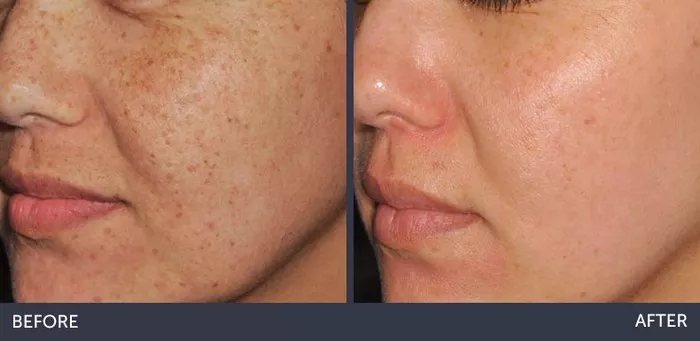Microdermabrasion is a popular non-invasive cosmetic procedure aimed at rejuvenating the skin by exfoliating the outermost layer and stimulating cell turnover. It has gained recognition for its ability to improve skin texture, reduce the appearance of fine lines and wrinkles, and diminish hyperpigmentation. However, as with any skincare treatment, there are concerns and misconceptions surrounding the potential damage that microdermabrasion may cause to the skin. In this article, we will delve into the topic and separate fact from fiction when it comes to the safety and potential side effects of microdermabrasion.
Understanding Microdermabrasion
Microdermabrasion is a non-chemical, mechanical exfoliation technique that uses a specialized device to gently remove the outer layer of dead skin cells. The procedure typically involves the use of a handheld device that emits fine crystals or a diamond-tipped wand to abrade the skin’s surface. This exfoliation process helps improve the appearance of the skin and promotes cell regeneration.
The Myth of Skin Damage
There is a common misconception that microdermabrasion can damage the skin. However, when performed correctly by a trained professional, microdermabrasion is considered a safe and effective treatment with minimal risks. Let’s explore some of the concerns associated with microdermabrasion and address the truth behind them.
1. Pain and Discomfort
One concern is that microdermabrasion may be painful or uncomfortable. However, most individuals report minimal discomfort during the procedure. The sensation can vary from a gentle scratching or vibration to a mild suction feeling, depending on the specific type of microdermabrasion device used. If you experience any discomfort, inform your esthetician or dermatologist, as they can adjust the settings or technique to ensure your comfort.
2. Redness and Sensitivity
After microdermabrasion, it is common for the treated area to appear slightly red and feel sensitive. This is a normal reaction to the exfoliation process and usually subsides within a few hours to a day. The redness is temporary and should not cause any long-term damage to the skin. Applying a gentle moisturizer and avoiding harsh skincare products can help soothe the skin and minimize any potential sensitivity.
3. Dryness and Flaking
Following microdermabrasion, some individuals may experience temporary dryness and flaking as the skin undergoes the exfoliation process. This is a natural part of the skin’s healing and renewal process. It is important to keep the skin well-hydrated and moisturized during this time to help alleviate dryness and promote optimal healing. Your skincare professional may recommend specific moisturizers or post-treatment products to aid in the recovery process.
4. Post-Treatment Sun Sensitivity
Microdermabrasion can make the skin more susceptible to sun damage immediately after the procedure. The exfoliation process removes the top layer of dead skin cells, which can provide less natural protection against harmful UV rays. It is crucial to protect your skin from the sun by applying a broad-spectrum sunscreen with an adequate SPF and wearing protective clothing and accessories such as hats and sunglasses.
5. Over-Exfoliation
One of the concerns with microdermabrasion is the risk of over-exfoliating the skin. Over-exfoliation can compromise the skin’s natural barrier and lead to dryness, sensitivity, and irritation. However, when performed by a trained professional, microdermabrasion is typically tailored to each individual’s skin type and concerns. The depth and intensity of the treatment can be adjusted accordingly to ensure optimal results without damaging the skin.
Benefits and Safety Measures of Microdermabrasion
Microdermabrasion, when performed correctly and under the guidance of a qualified professional, offers numerous benefits for the skin. These include:
1. Exfoliation and Cell Renewal
Microdermabrasion effectively removes dead skin cells and promotes the regeneration of new, healthier skin cells. This process helps improve skin texture, tone, and overall appearance. By eliminating the buildup of dead skin cells, microdermabrasion can enhance the effectiveness of other skincare products, allowing them to penetrate more effectively.
2. Improvement in Skin Concerns
Microdermabrasion can address a range of common skin concerns, including fine lines and wrinkles, uneven skin tone, hyperpigmentation, acne scars, and enlarged pores. Regular treatments can lead to a more youthful and radiant complexion.
3. Non-Invasive and Minimal Downtime
Microdermabrasion is a non-invasive procedure that requires little to no downtime. Unlike more aggressive skin resurfacing treatments, such as chemical peels or laser therapies, microdermabrasion does not require anesthesia or extensive recovery periods. After the treatment, most individuals can immediately resume their daily activities.
4. Suitable for Most Skin Types
Microdermabrasion is generally safe and suitable for most skin types, including sensitive skin. The procedure is customizable, allowing the skincare professional to adjust the intensity and depth of the treatment based on individual needs and concerns.
Precautions and Considerations
While microdermabrasion is considered safe, it is essential to take certain precautions and consider specific factors before undergoing the procedure:
1. Professional Expertise
Ensure that you choose a qualified and experienced skincare professional or dermatologist to perform microdermabrasion. A skilled professional will assess your skin type, concerns, and medical history before recommending and performing the treatment. They will also guide you through the post-treatment care and provide specific instructions for optimal healing.
2. Communicate Your Concerns and Expectations
During your consultation, communicate openly with your skincare professional about your skin concerns, goals, and any potential sensitivities or allergies. This information will help them tailor the treatment to your specific needs and ensure the best possible outcome.
3. Post-Treatment Care
Follow your skincare professional’s instructions for post-treatment care and maintenance. This may include avoiding harsh or abrasive skincare products, using gentle cleansers and moisturizers, and applying sunscreen diligently. Adhering to these recommendations will help protect your skin, promote healing, and maintain the results of the treatment.
Conclusion
Microdermabrasion, when performed by a trained professional, is a safe and effective skin rejuvenation option. The concerns surrounding potential skin damage are largely unfounded when the procedure is carried out properly and appropriate aftercare measures are followed. By understanding the facts and considering the benefits and safety measures associated with microdermabrasion, you can make an informed decision and enjoy the potential skin-improving benefits of this popular cosmetic treatment.


